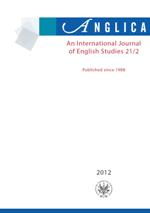The gerundial constructions in a diachronic perspective: past and present
The gerundial constructions in a diachronic perspective: past and present
Author(s): Xavier DekeyserSubject(s): Language and Literature Studies
Published by: Wydawnictwa Uniwersytetu Warszawskiego
Keywords: gerund; semi-gerund; -ing; -ung; Middle English; Modern English; verbs of perception
Summary/Abstract: In Modern English the gerund, historically a nominalized verb in –ung(e), is marked by a gradient of increasing verbalization, from full noun (the reading of the book) to nearly full verbalization (... John having read his essay very carefully), which is due to morphological syncretism in Early Middle English with the present participle in –ind(e). It is demonstrated that this (re)verbalization can be traced diachronically from its incipient phase to Modern English. It also allows us to fine-tune our terminology as to the most recent stage in terms of verbalized or verbal gerund, which at first sight seems to be a contradictio in terminis. In light of the data it is argued that –ing forms after verbs of perception (We saw him working in the garden) can also be interpreted as (semi-)gerunds, featuring at the extreme right of the gradient; ‘‘semi-”, because such structures lack one nominal property, viz. the genitival subject (...*his working in the garden). The historical history and development of the gerund in English can be described as a triadic process: VERB – NOUN – VERB.
Journal: ANGLICA - An International Journal of English Studies
- Issue Year: 21/2012
- Issue No: 2
- Page Range: 17-30
- Page Count: 14
- Language: English

